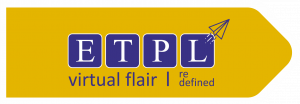ERP data migration is a pivotal process in modernizing business operations. Transitioning from legacy systems to new ERP software demands meticulous planning and execution. However, handling ERP data migration from legacy systems to new ERP software can be complex. This article will provide insights into overcoming these challenges and ensuring a seamless transition.
Table of Contents.
- Understanding ERP Data Migration
- Challenges in Migrating Data from Legacy Systems
- Steps to Ensure a Smooth ERP Data Migration
- Best Practices for ERP Data Migration
Understanding ERP Data Migration
ERP data migration involves transferring data from old legacy systems to a new ERP system. This process is vital for maintaining business continuity and leveraging new technology capabilities.
According to market research, nearly 75% of all ERP projects encounter delays due to data migration issues.
Challenges in Migrating Data from Legacy Systems
Data Quality Issues: Old systems usually have old, extra, or wrong data, making the switch harder. Keeping data in check and correct takes up a lot of time during cleaning and checking. This helps prevent moving bad data into the new system.
Complex Data Structures: Older systems can have distinctive data structures that don not match up with current ERP systems. This can involve exclusive formats or data fields that aren not standardized, which can require a large amount of mapping and changes. This process often involves personalized scripts or niche middleware.
Downtime Risks: Moving data can shake up a business. This happens because large data moves need the system to pause. Proper planning is key. Do it during slow business hours. Or use step-by-step or side-by-side methods. These steps keep your business running smoothly.
Compatibility Issues: Older systems typically run on out-of-date equipment and programs. This demands extra bucks for temporary fixes or tailored interfaces. The process of moving to a new system gets trickier due to compatibility problems. Rigorous checks and fixing issues is required for smooth merging.
Steps to Ensure a Smooth ERP Data Migration
To ensure a smooth ERP data migration, the following steps should be taken:
Data Assessment and Cleaning
First, data from the legacy system should be thoroughly assessed and cleaned. This involves identifying and rectifying inaccuracies, redundancies, and outdated information.
Data Mapping and Transformation
So, what is next? It is all about preparing your data. This comes in two parts: data mapping and data transformation. Think of data mapping like pairing up dance partners – old system meets new system. Now, data transformation. Not as scary as it sounds, it is just making sure your data fits the new format, like trying on a suit to make sure it fits. And guess what? There are tools designed to make this easy for you.
Testing and Validation
Lastly, thorough checks and verification are key. They confirm the data moved is correct and works well in the fresh ERP system. It is smart to do lots of test runs, like unit testing, system testing, and user testing.
Best Practices for ERP Data Migration
Early Planning: Early and detailed planning can identify potential issues and address them proactively.
Stakeholder Involvement: Involving all stakeholders, including IT, management, and end-users, ensures a holistic approach.
Data Governance: Establishing data governance policies can maintain data integrity and quality.
Incremental Migration: Migrating data incrementally, rather than all at once, can reduce risks and allow for better control over the process.
Regular Monitoring: Continuous monitoring and post-migration audits can identify and resolve any issues promptly.
According to Research, 67% of companies that followed best practices in data migration reported successful ERP implementations.
Shifting ERP data from old systems to new software is a key job, requiring thoughtful planning and follow through. By knowing the potential hurdles, taking careful steps, and using proven methods, companies can navigate a smooth switch. As tech changes, making sure data moves correctly and swiftly will continue to be crucial for harnessing new ERP functions and keeping an edge on competitors.
Visit our website or call us now to schedule your free demo and discover the difference eGenius ERP System can make. Don’t wait – elevate your business operations with eGenius ERP System today!














